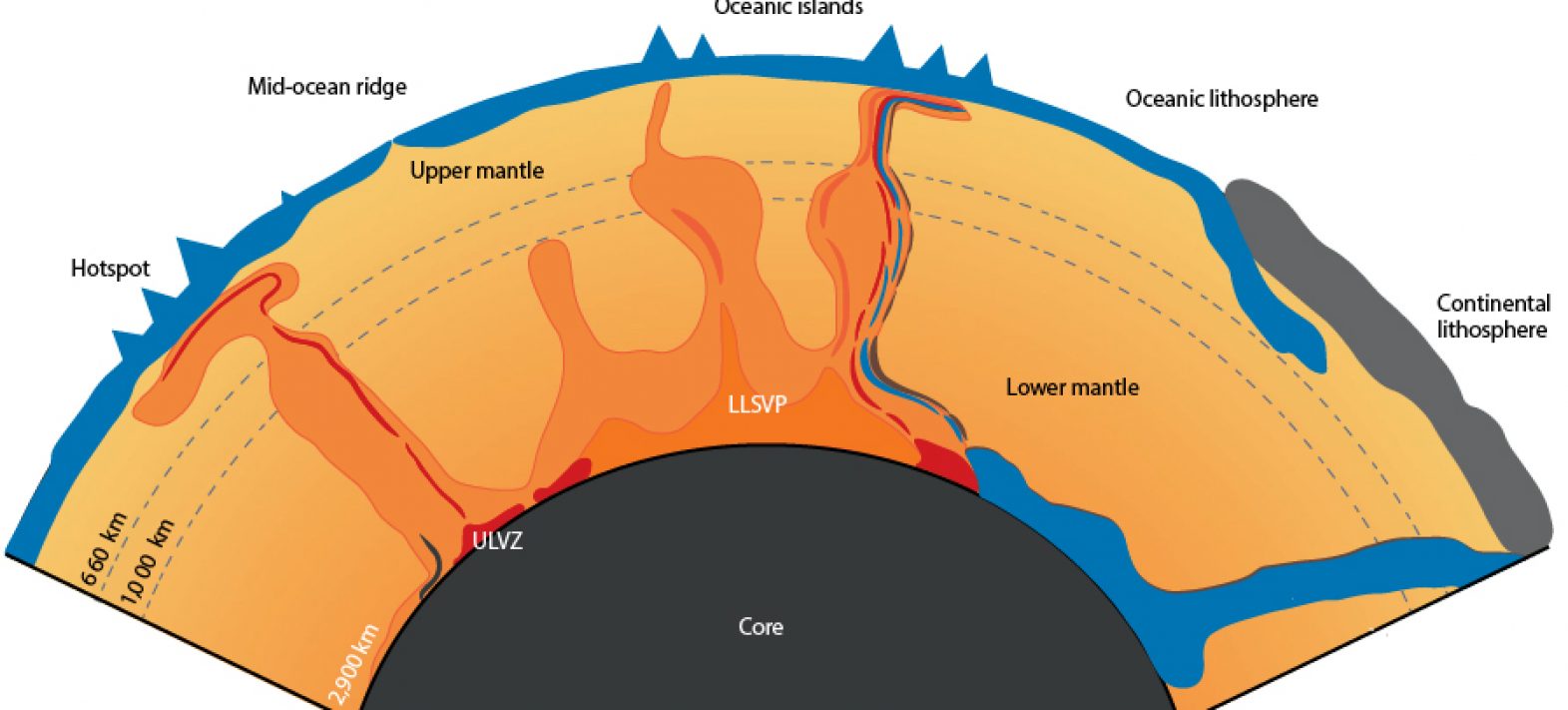The Earth’s mantle as revealed by plume geochemistry
In a review article, an international team, including researchers from the IPGP, presents a review of present knowledge of the deep dynamics of the Earth's mantle using the isotopic compositions of rocks formed by mantle plumes.

Publication date: 05/09/2023
Press, Research
Mantle plumes are zones of hotter, and therefore less dense, material in the Earth’s mantle that originate at depths close to the boundary between the core and the mantle (~2,800 km). These plumes are at the origin of oceanic ‘hot spot’ islands such as the Hawaiian archipelago and Reunion Island. Samples taken from oceanic islands therefore provide invaluable information about the composition and dynamics of our planet’s mantle.
Advances in analytical techniques and a better understanding of isotopic systems have recently opened up new perspectives, providing new information on the dynamics of convection, the formation and recycling of the crust and the heat and volatile balances at a planetary scale.
In a review article published this 29 August in Nature Reviews Earth & Environment, an international team of nine researchers, including two from the Institut de Physique du Globe de Paris, reviews the latest state of knowledge in the field and summarises the constraints and challenges posed by the use of isotope analyses of rocks produced at the Earth’s surface by these plumes.
The isotopic analyses of radiogenic (Sr, Nd, Pb, Hf, W, rare gases) and stable (Li, C, O, S, Fe, Tl) isotopes are used to determine the origin of mantle plumes and their dynamics. They characterise the nature of mantle heterogeneities involving early mantle reservoirs, crustal recycling processes and interactions between the Earth’s core and mantle. This summary suggests that the plumes should be seen as representing a spectrum of properties and processes active in the Earth’s interior. Future studies will need to combine the various geochemical tools on the same samples, to better determine the potential links between location of plume sources and processes responsible for the observed variability.
Bibliography :
> Weis, D., Harpp, K.S., Harrison, L.N. et al. Earth’s mantle composition revealed by mantle plumes. Nat Rev Earth Environ 4, 604-625 (2023). https://doi.org/10.1038/s43017-023-00467-0







